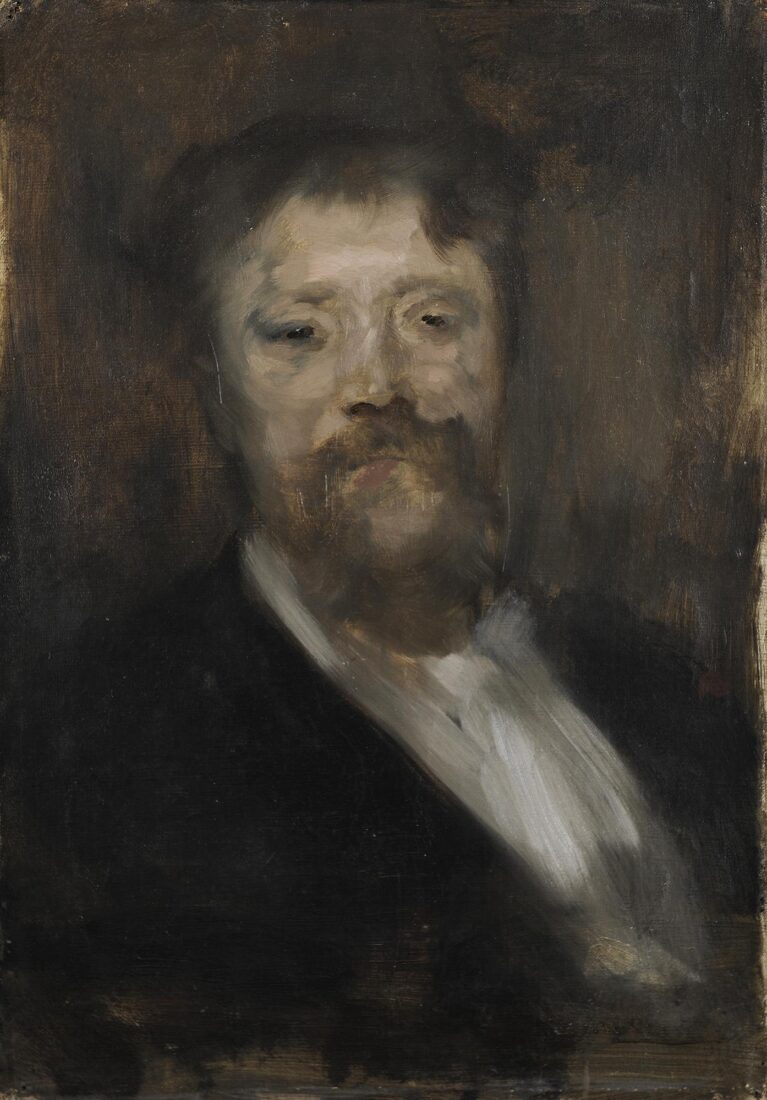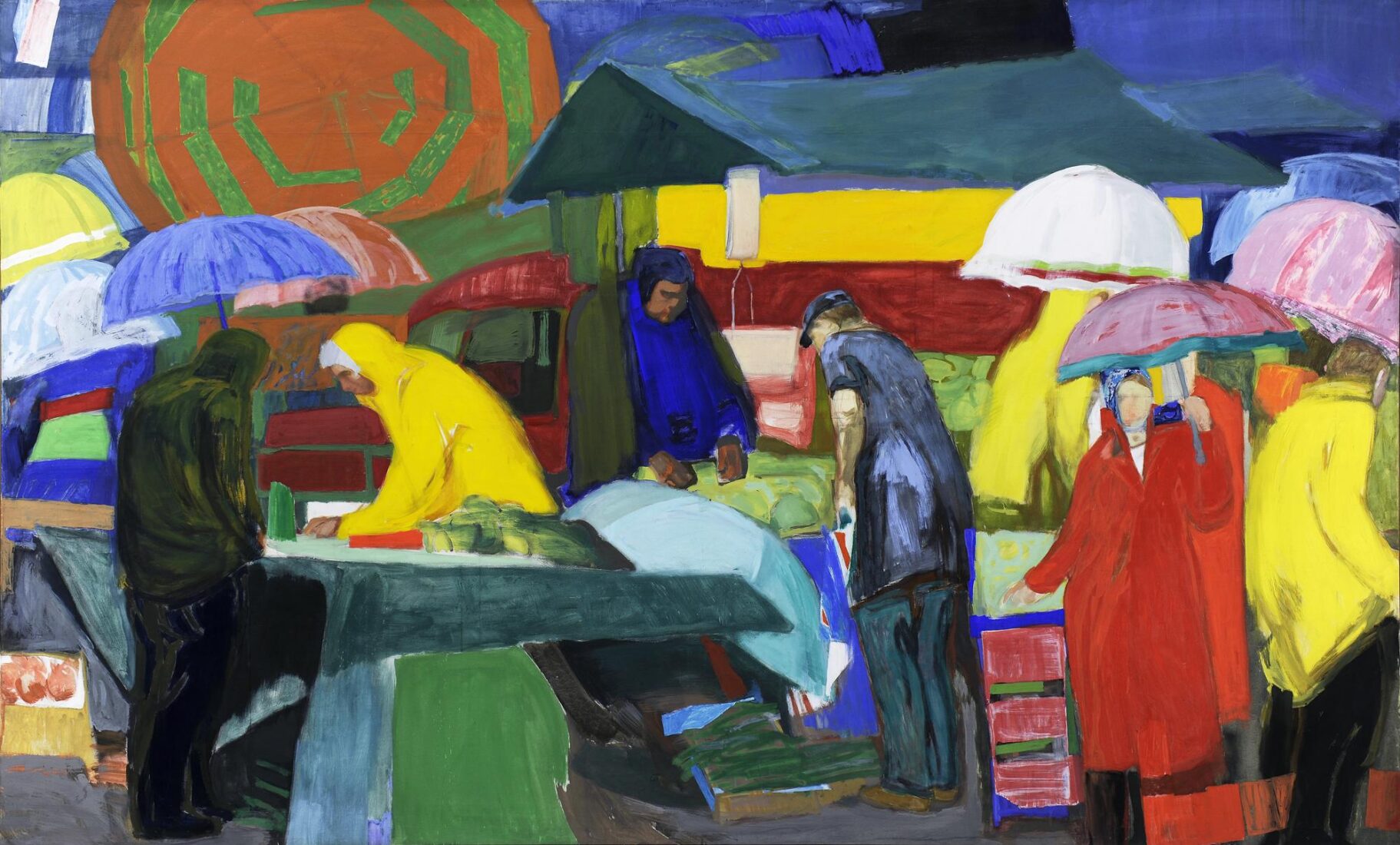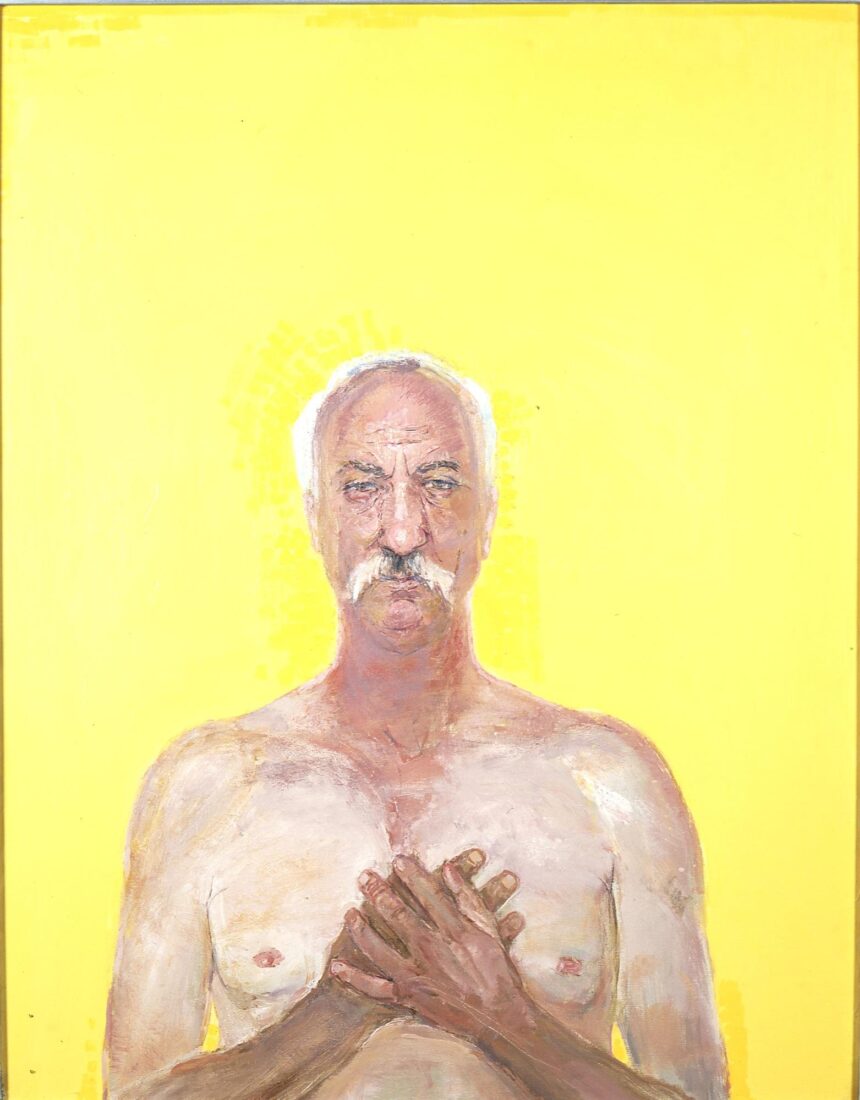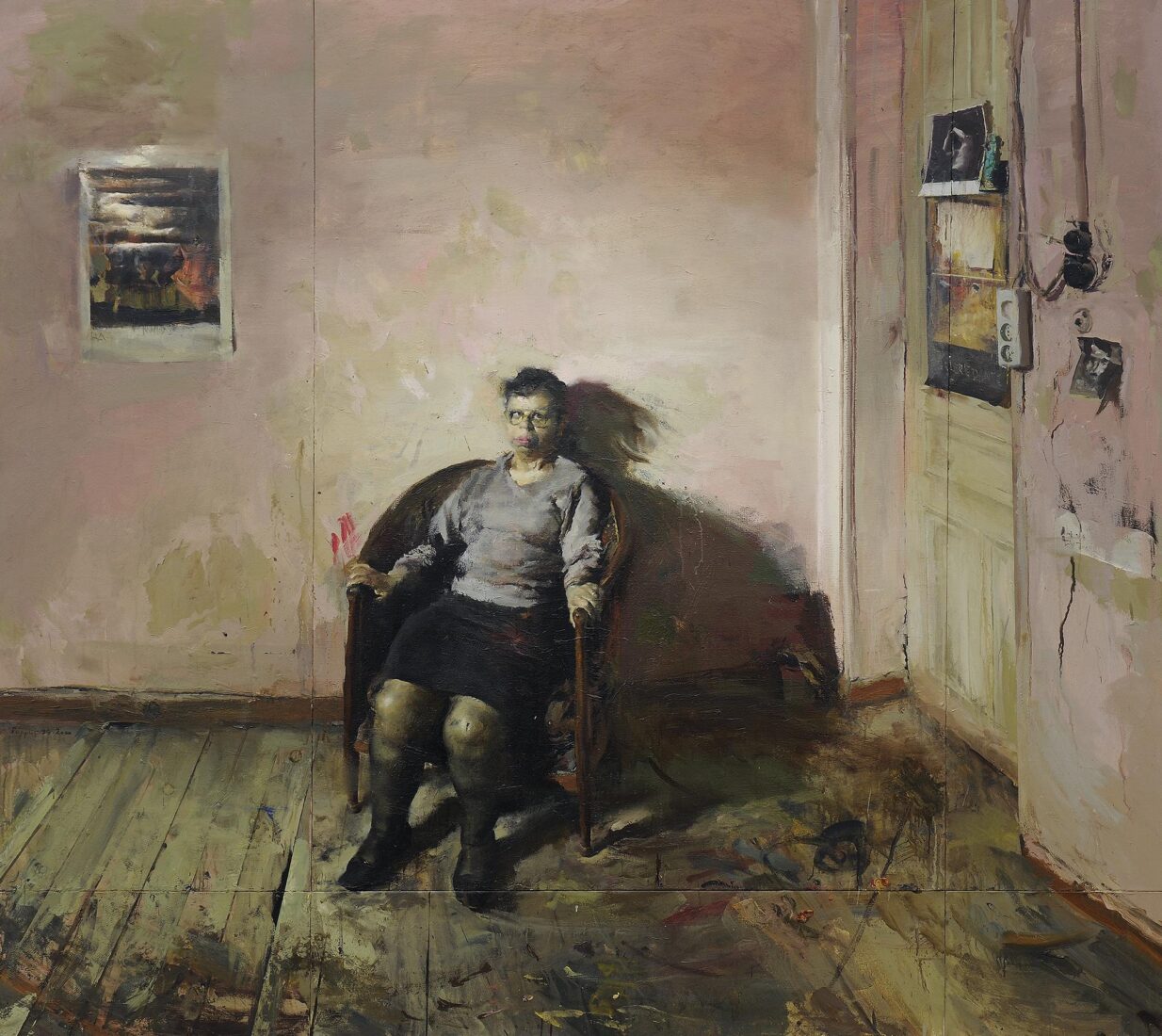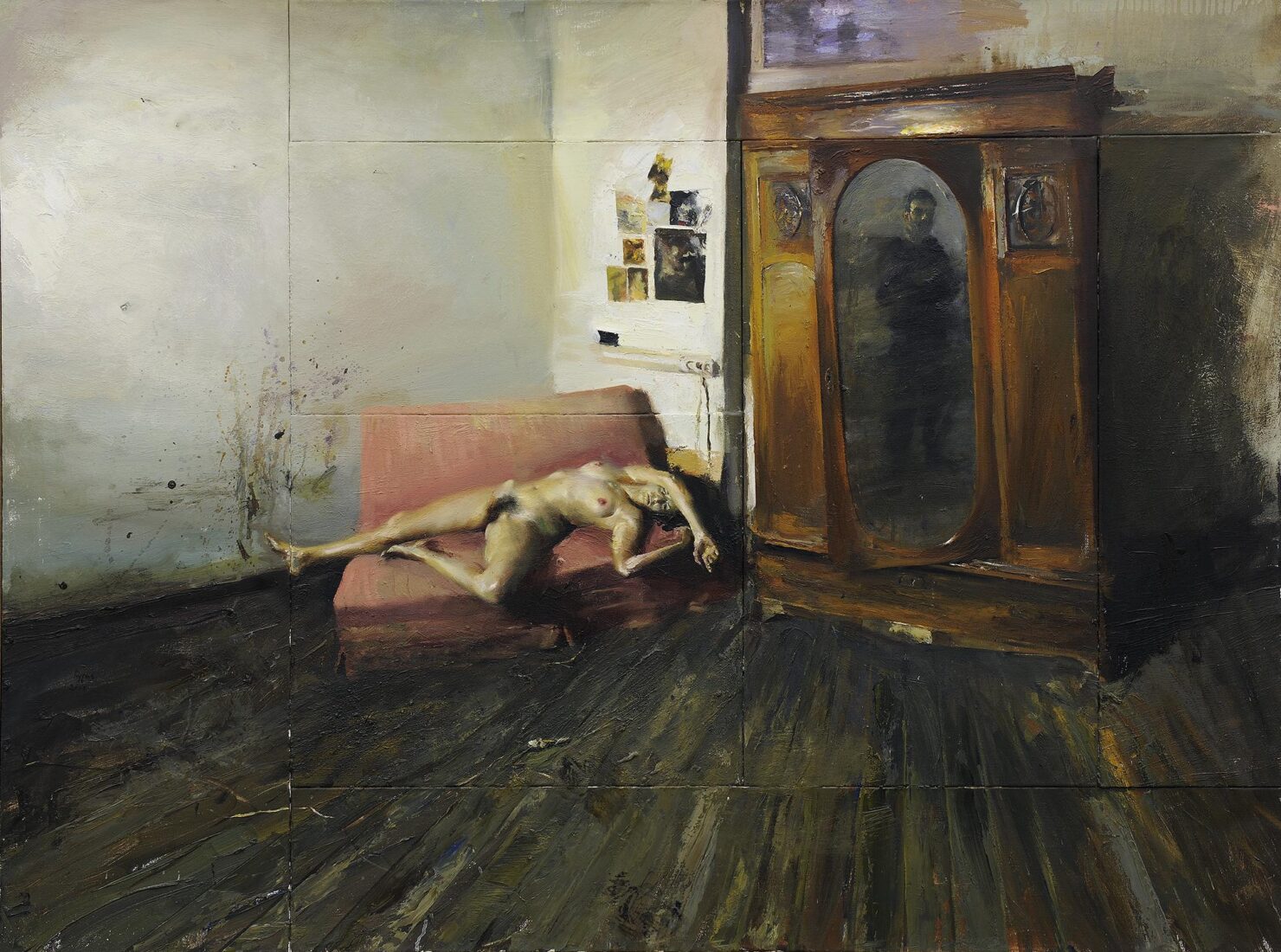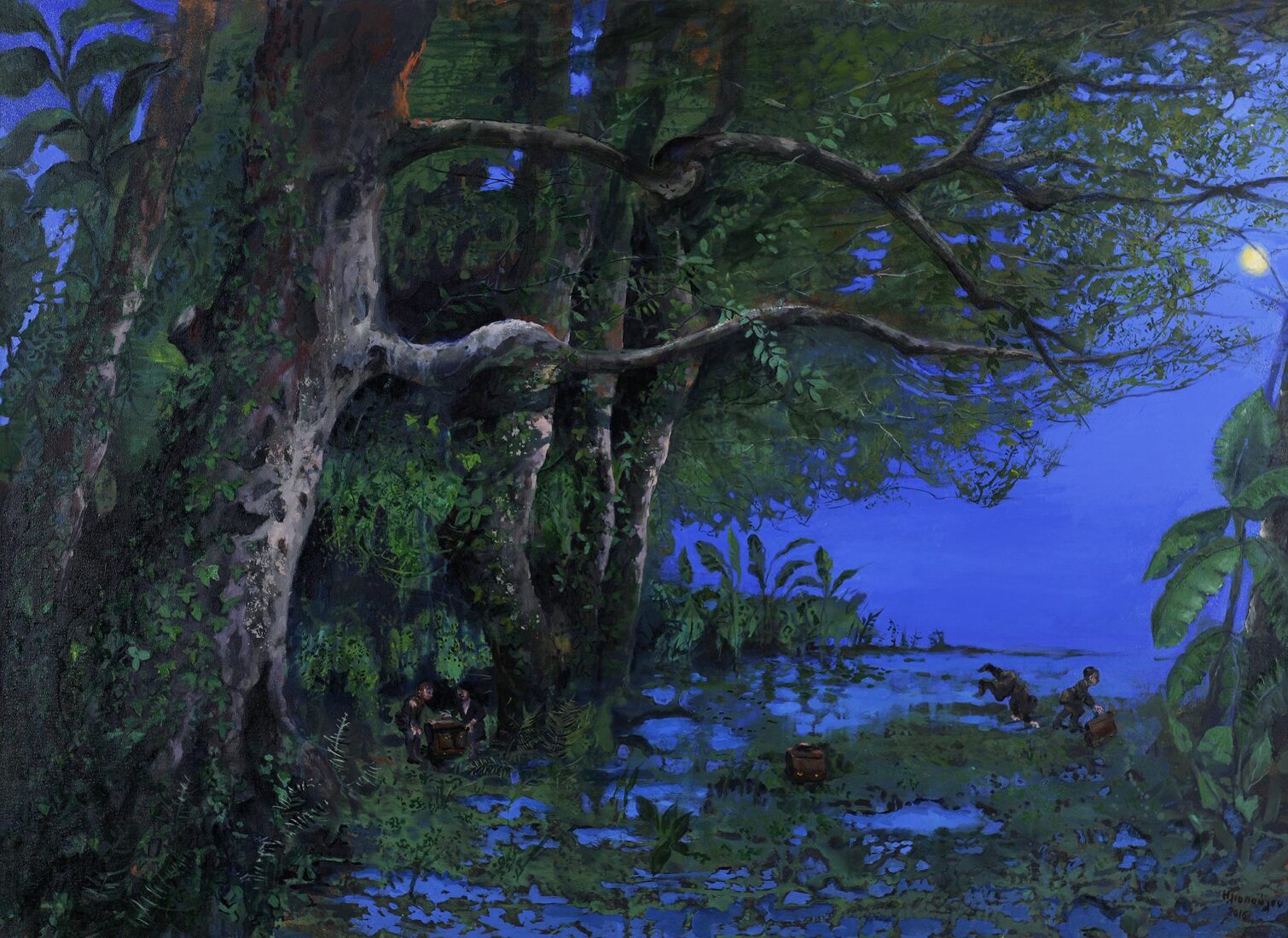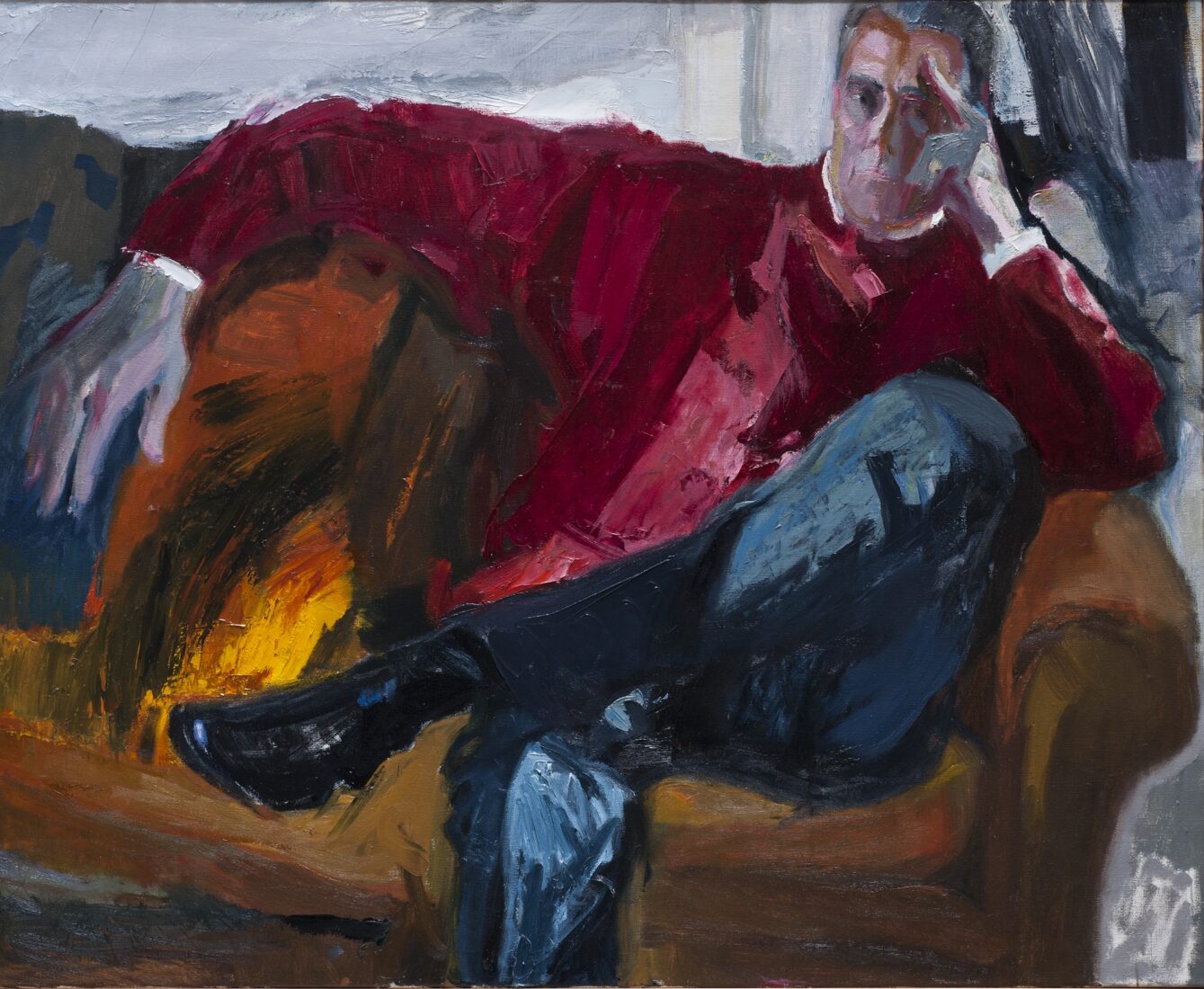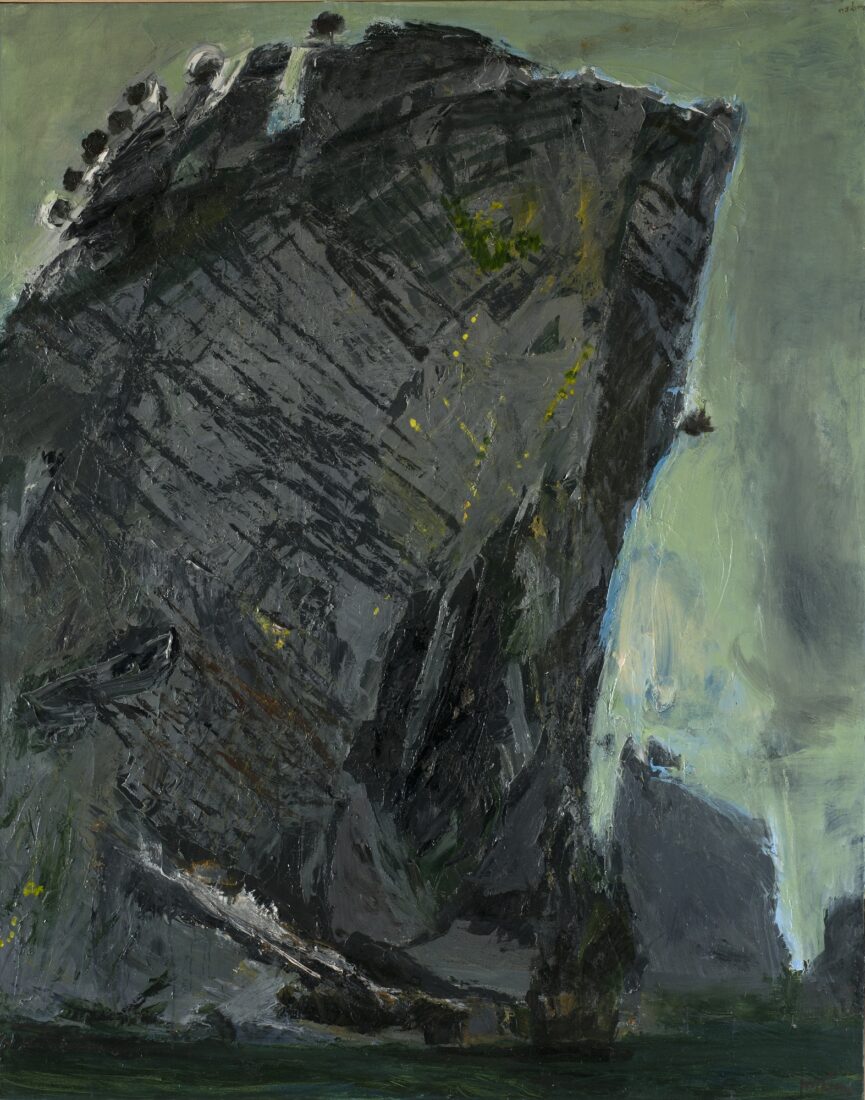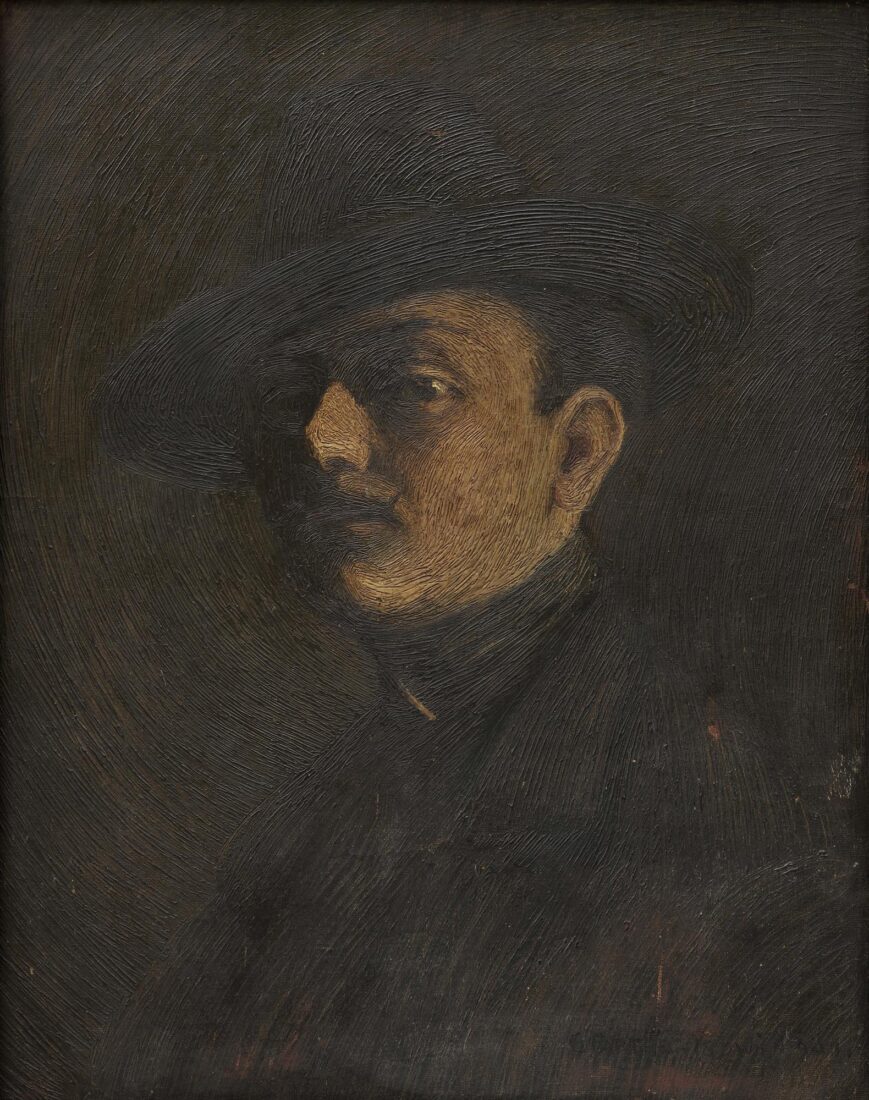

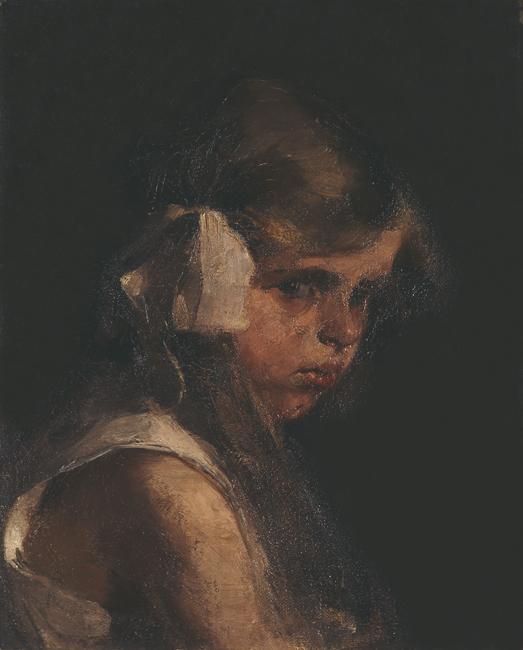
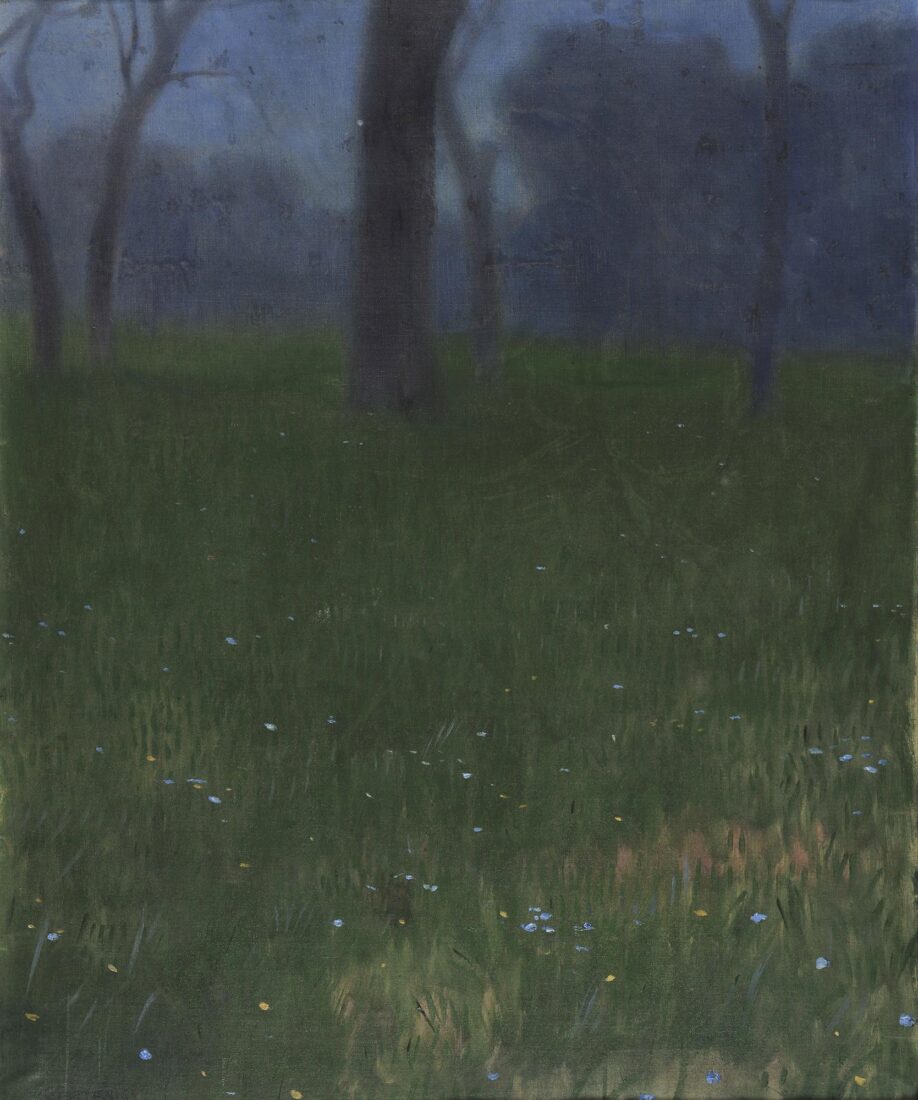
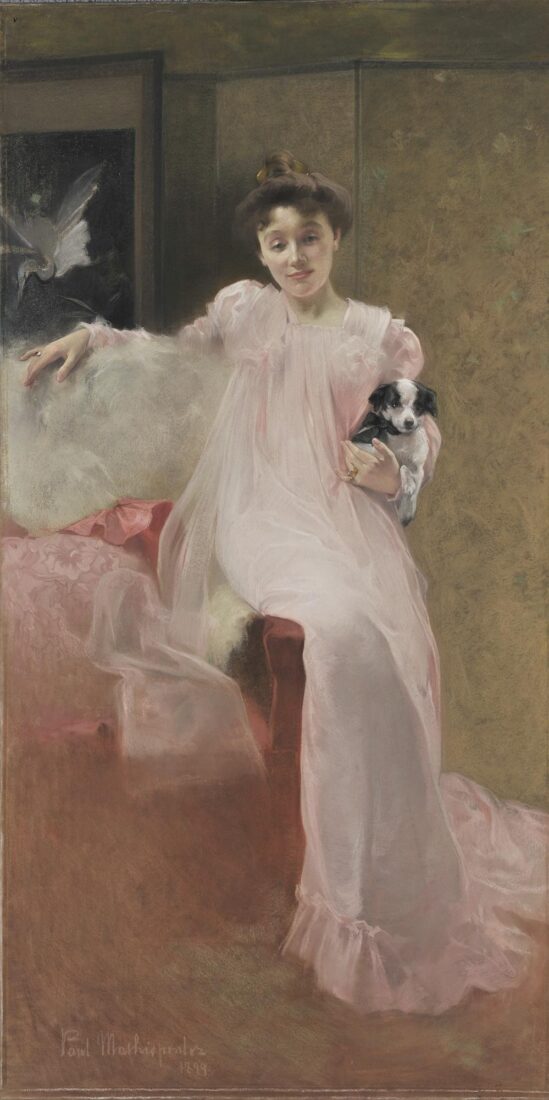
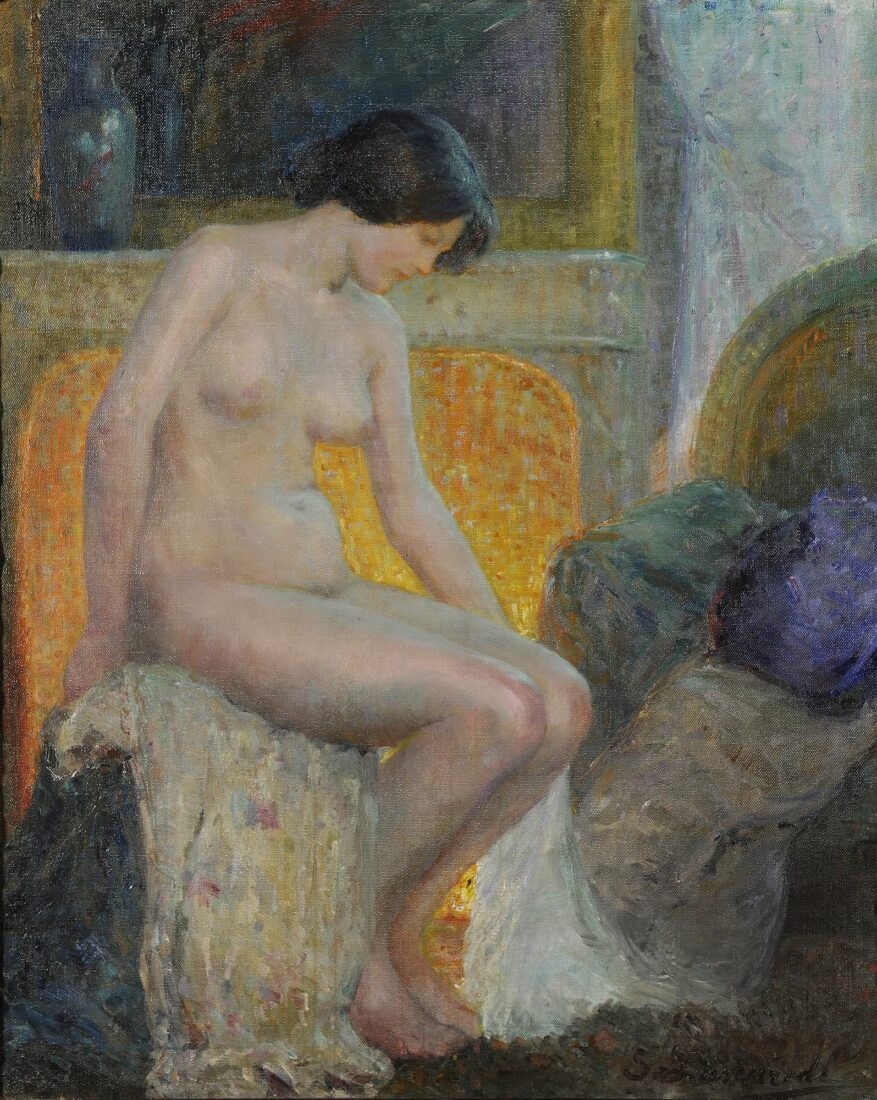
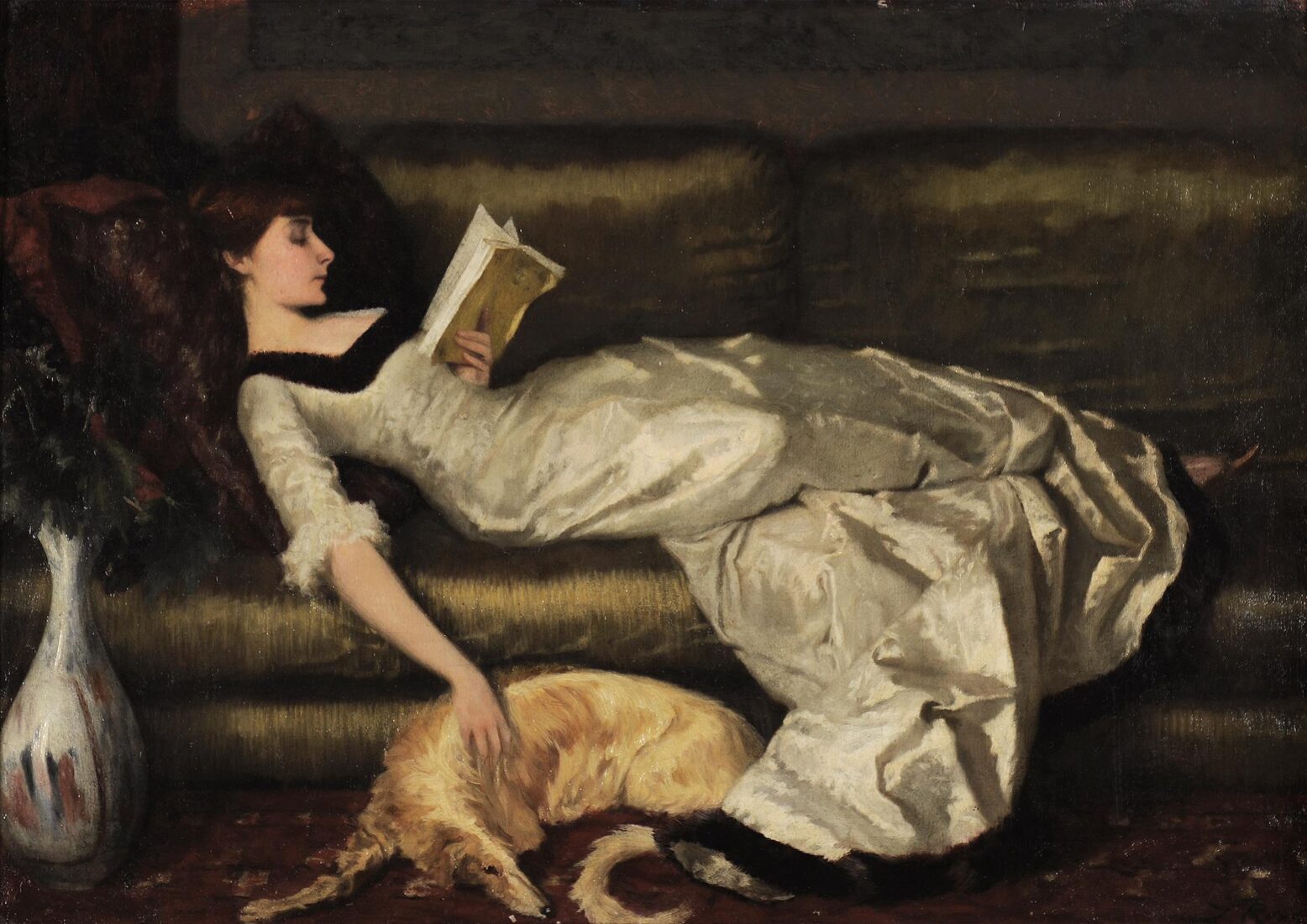
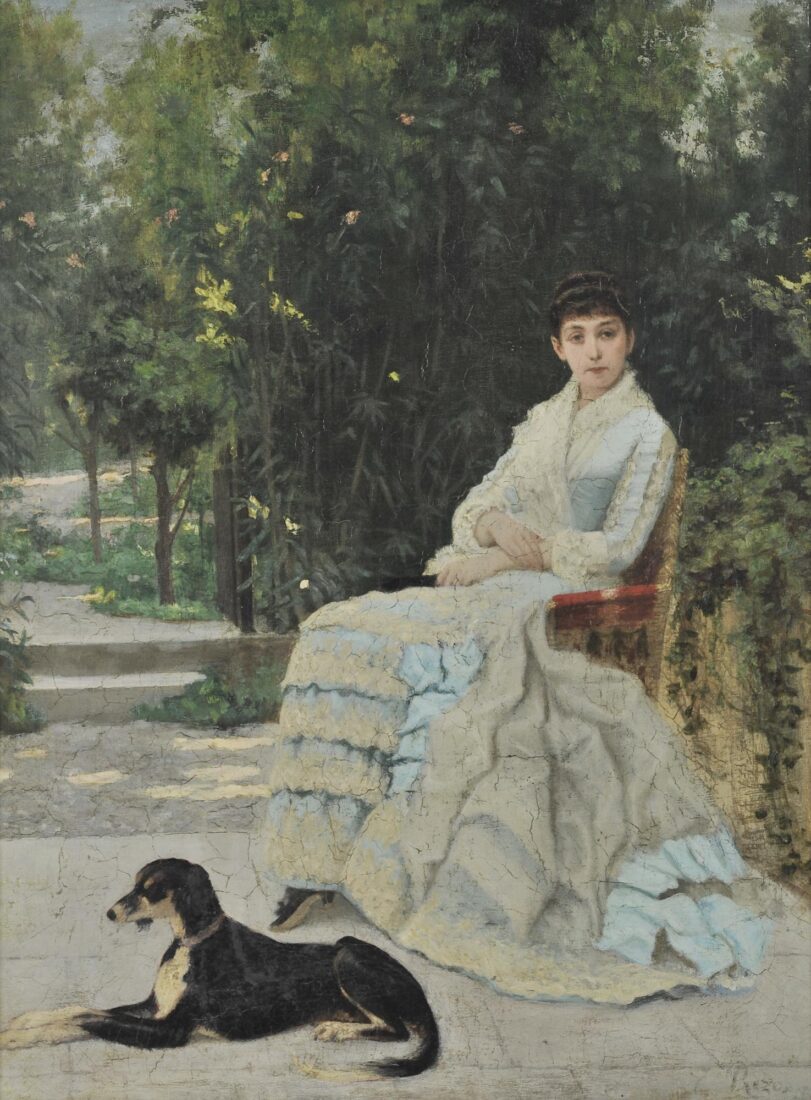
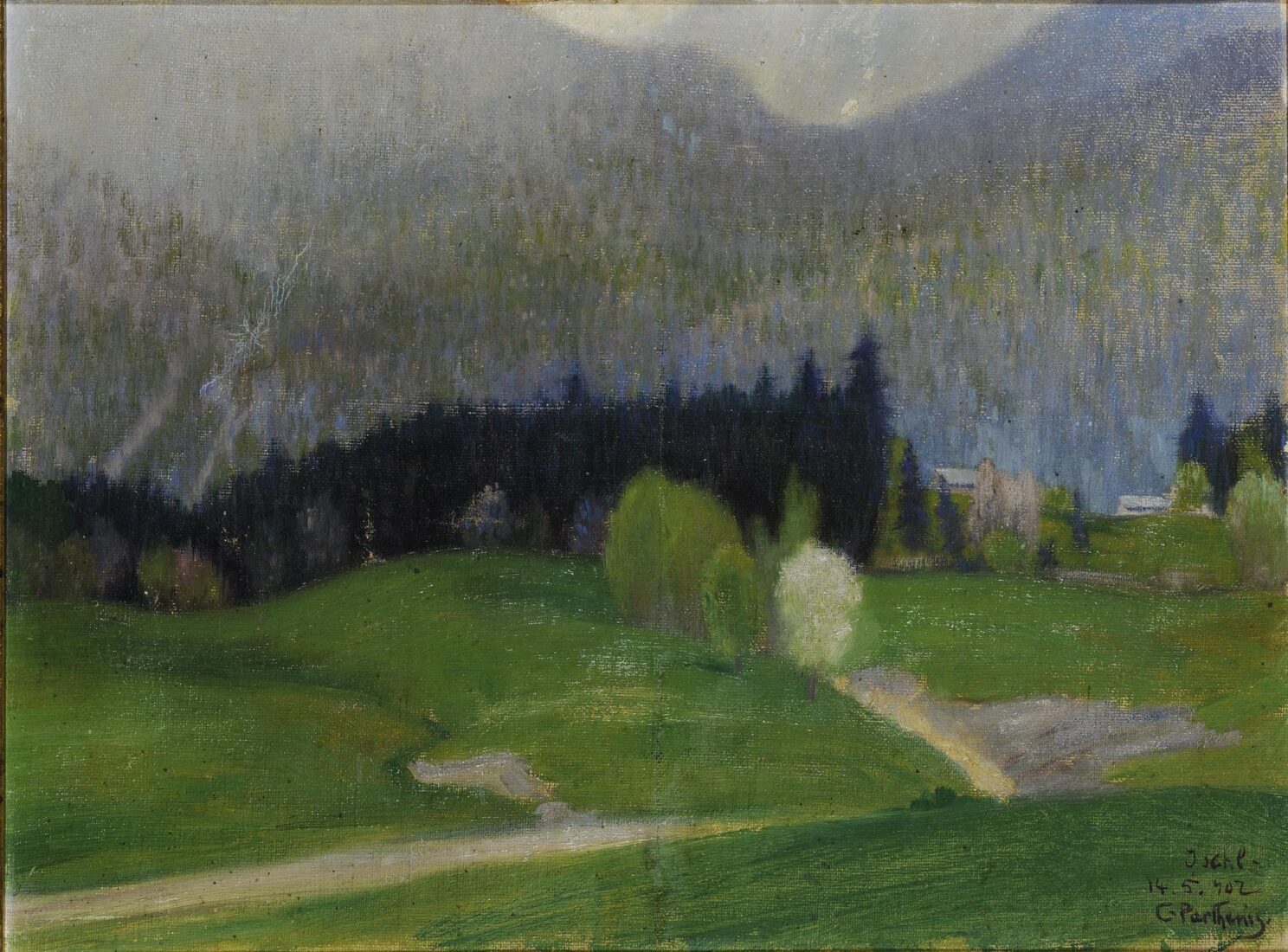
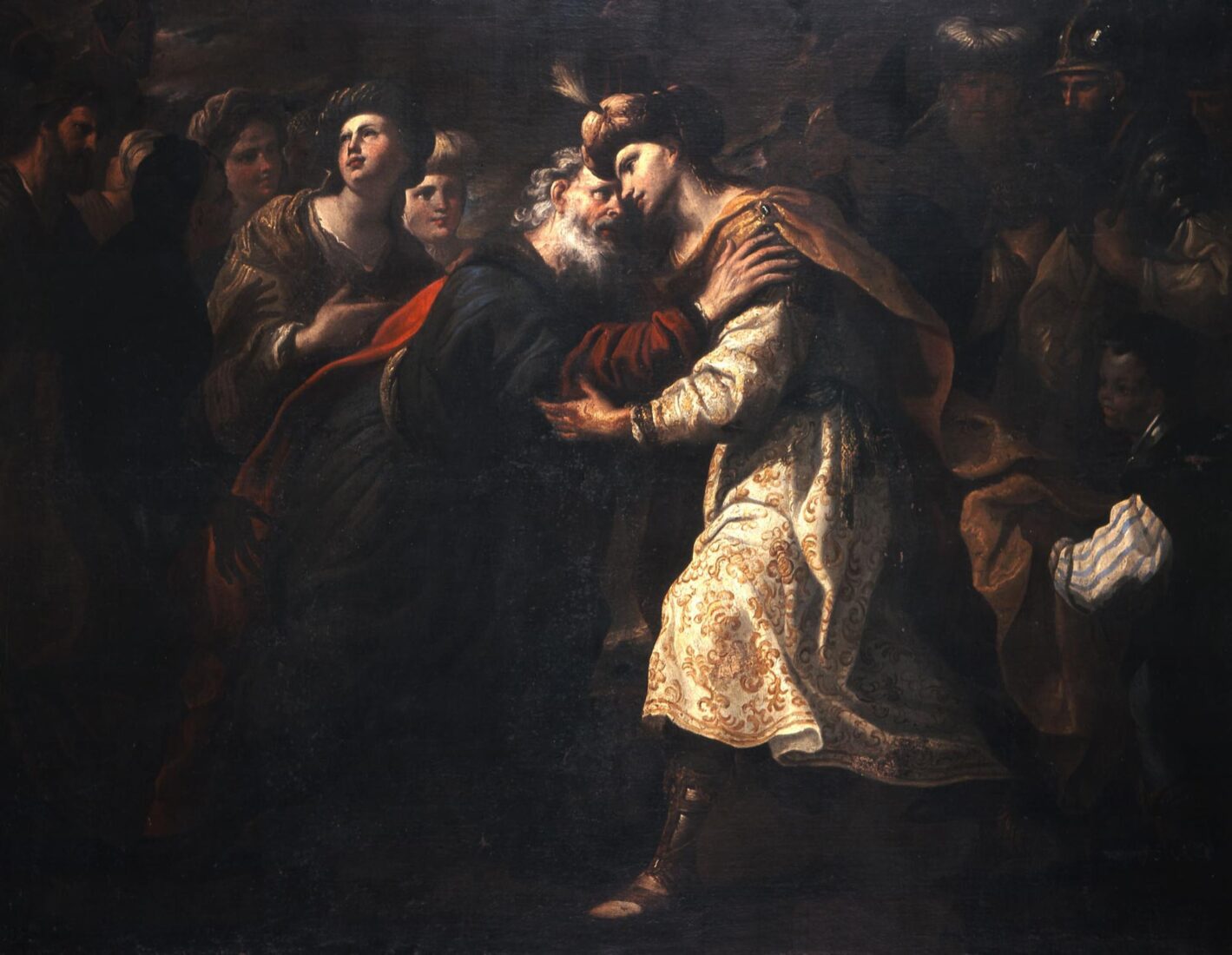
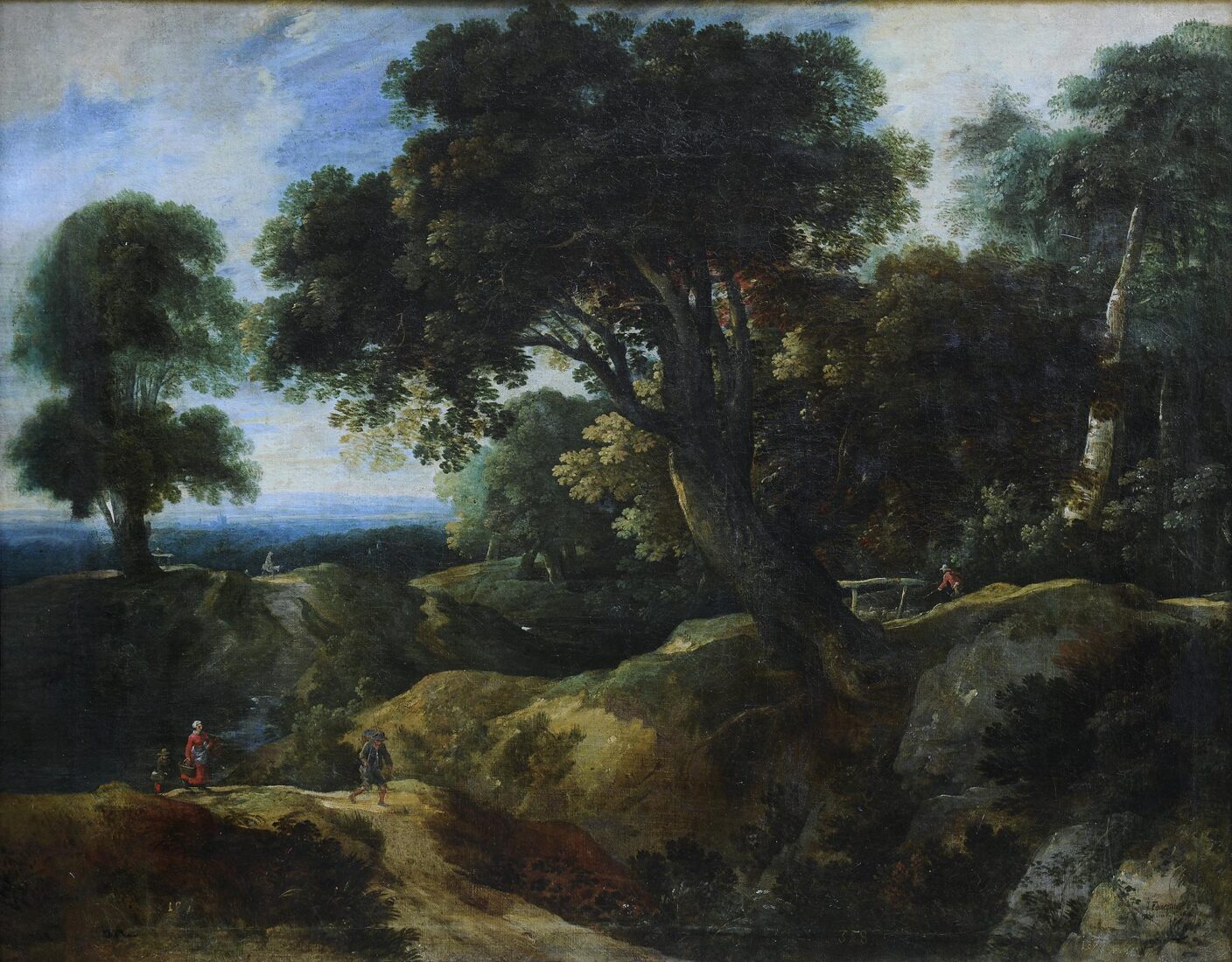
Foucquieres’s work at the National Gallery presents a number of similarities to many of the landscapes by Dutch and Flemish artists in the seventeenth century and is organized in a like manner, that is, these landscapes are bordered to the left and right by trees, or rows of trees, usually interrupted in the middle by rivers or narrow lanes, while the horizon disappears into the remote depths. In the idyllic nature of these works there are scattered figures, usually small in size, of villagers, hunters or shepherds. Landscapes of this type were made, for example, by Lodewijk de Vadder, Jacques d’ Arthois, and Paul Bril. The signed work by Foucquieres at the Fine Arts Museum of Nantes, “Rugged Landscape with Hunters”, from 1620, also appears to have a connection to the work at the National Gallery. The dominance of brown tones in the foreground, green in the middleground and blue in the background, is one of the elements these two works have in common. The organization of the two landscapes also reveals certain other correspondences. Green areas of dense vegetation with tall trees alternate with heights, while in both works the landscape is interrupted in the middle: a river that diagonally traverses the landscape at the Nantes Museum has also been inserted in the landscape at the National Gallery.
The idyllic twilight landscape at the National Gallery, which hosts a shepherd and his flock, is more particularly related, however, to the prolific production of pastoral landscapes in the Low Countries during the 17th century. The production of these pastoral scenes in the Low Countries during that period is in turn connected to a more widespread tradition. Both in the art and in literature of the European Renaissance, from Italy and France to Spain and the Low Countries, and from at least as early as the 16th century, the bucolic genre boasts many examples. The “Idylls” of Theocritus and the “Eclogues” of Virgil are, of course, to be found at the commencement of this tradition, which was also particularly vital among the aristocratic circles of the period who celebrated, read and staged these bucolic scenes in theatres and masques. Rubens, Jacques d’Arthois, Paul Bril, Jan Wildens, and Gillis Neyts are all included among the many Flemish painters of bucolic landscapes. A common characteristic of many of these images was the small scale of the figures of the shepherds and their flocks, that were incorporated into landscapes of lush vegetation, usually wooded, and commonly depicted at sunset.
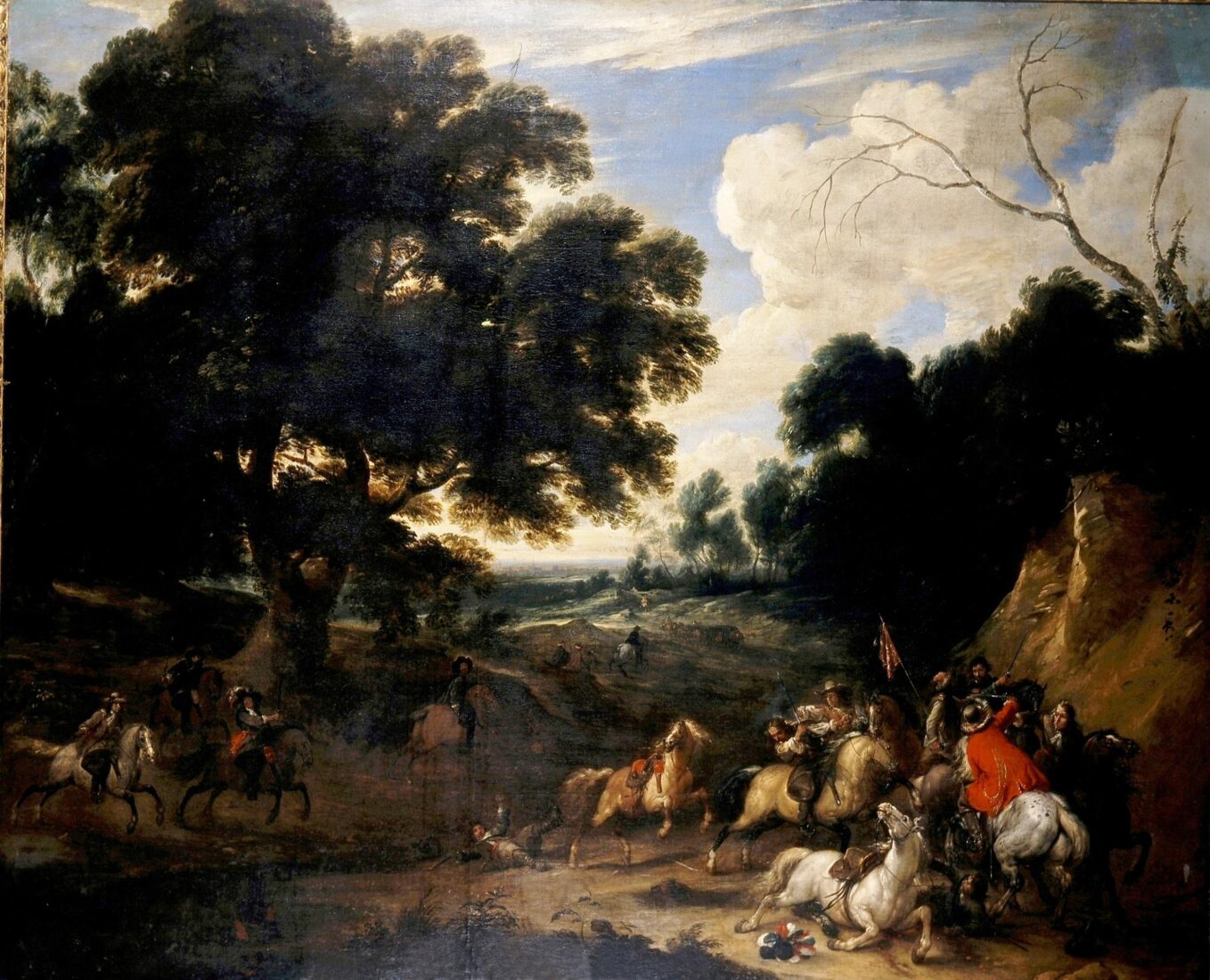
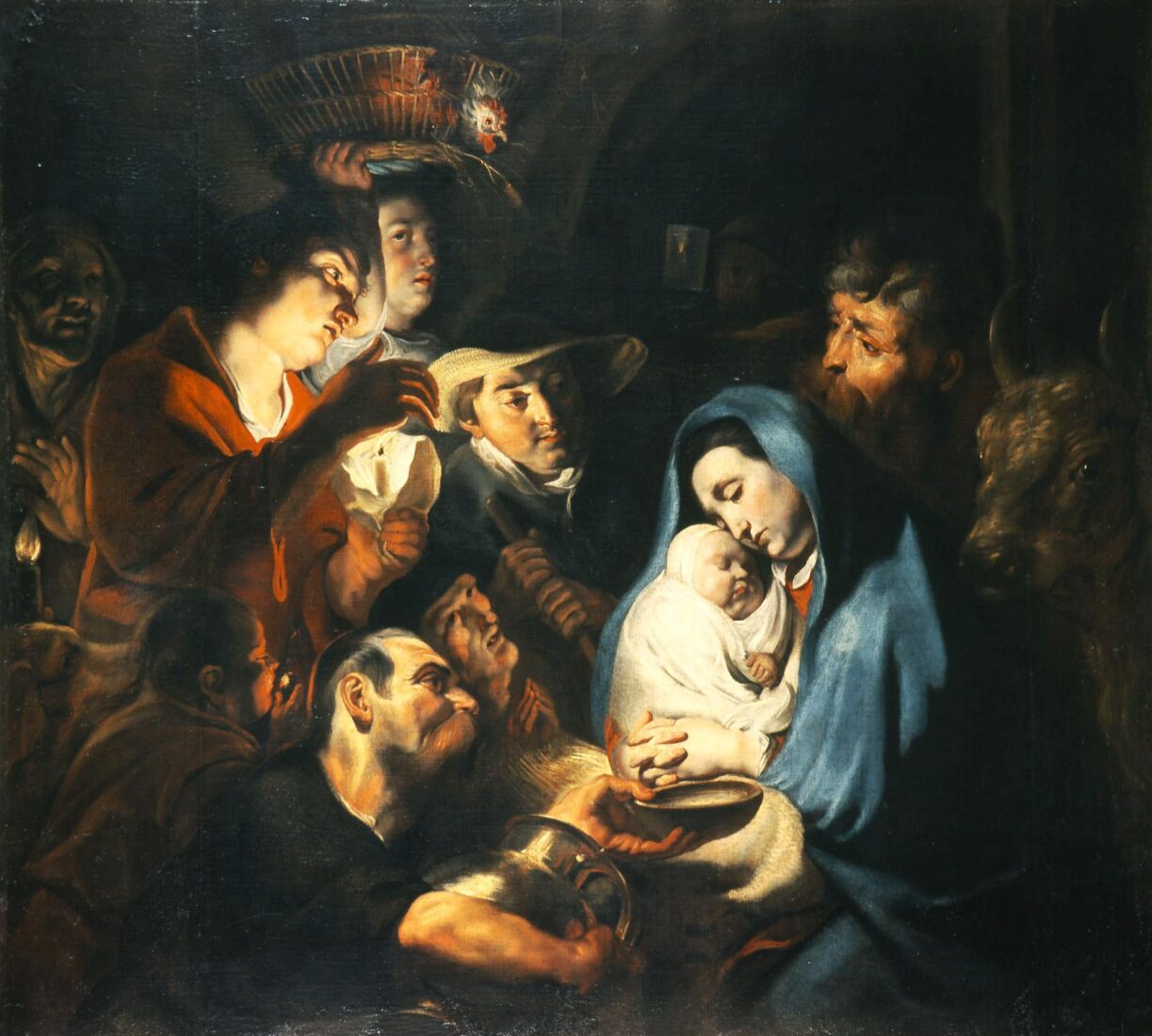
After the 16th century the Adoration of the Shepherds became one of the painters’ favorite themes in the Low Countries, while during the 17th, and particularly in Rubens’s work, it was enriched with the presence of female figures. According to the Evangelist Luke (2, 15-21) “Hastering there, the shephers found Mary, Joseph and Infant, lying in his crib”. In his work Jordaens depicts the moment when the shepherds, the young shepherds and shepherdesses are adoring the Holy Infant. The infant, however, is not in his crib but rather asleep in his mother’s arms. The composition is focused on the human relationship between mother and child. Wrapped in a blue cloak, the Virgin Mary is tenderly holding her baby, who, serene and secure, sleeps on her shoulder. Her head turned to the side, in the pose known as “Our Lady Sweetly-Kissing”, it rests on his forehead. The two of them appear to be cut off from all that is going on around them. Joseph is standing behind her while the donkey next to him indicates the participation of the animals in the scene. To their left a group of shepherds, young shepherds and shepherdesses are gazing devoutly at the Divine Infant. Indeed, one shepherd on the primary plane is offering him a bowl of milk while a woman to the rear is bringing a rooster in a farm basket. The scene takes place at night and is lit by a candle held by a young shepherd on the left. Its light spreads over the faces of the two central figures creating a delicate chiaroscuro effect which infuses the main theme with a sense of tranquility. Conversely, there are strong contrasts of light and shadow on the shepherd’s faces, thus increasing the feel of mystery this moment is imbued with.
The similarities between this work and the one at the Metropolitan Museum of Art in New York (“The Holy Family with Shepherds”) from 1616, lead us to the conclusion that this must have been done around 1615-1616. The composition, furthermore, follows the example set by Italian art, which was well-known in Antwerp, especially after Rubens returned from Italy, and this was the style Jordaens painted in, at least in the early stages of his career.
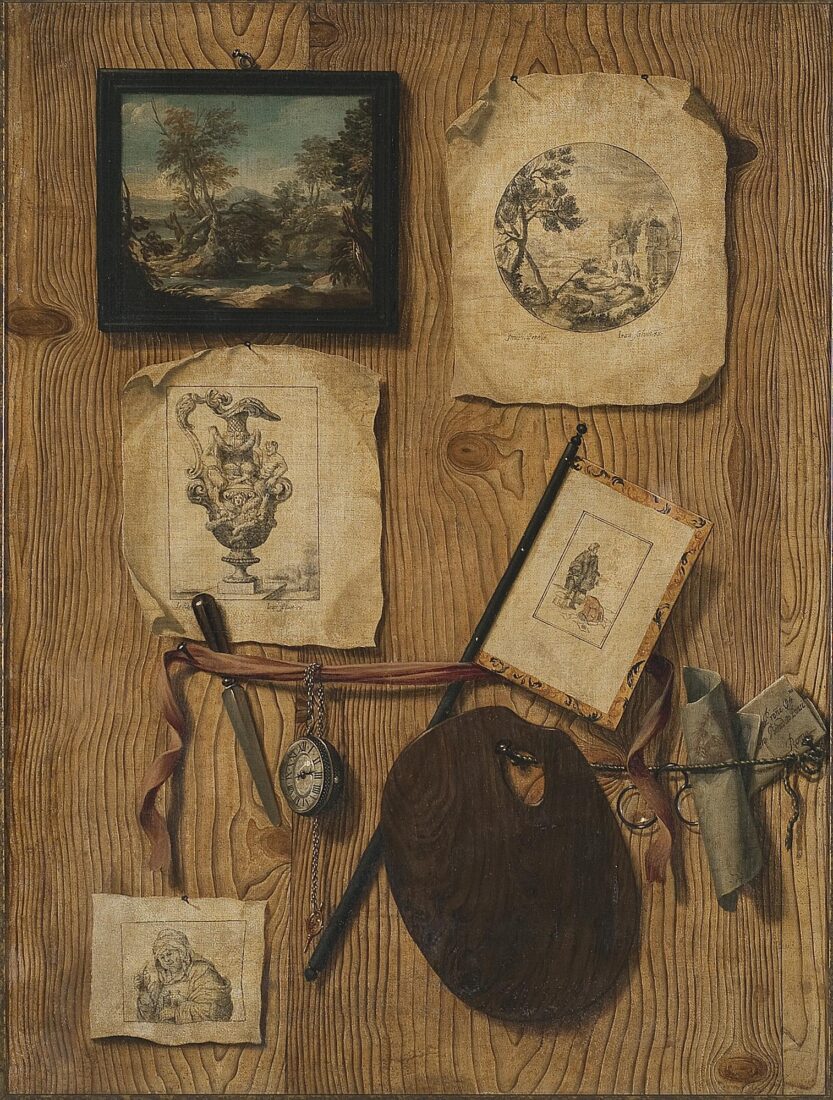
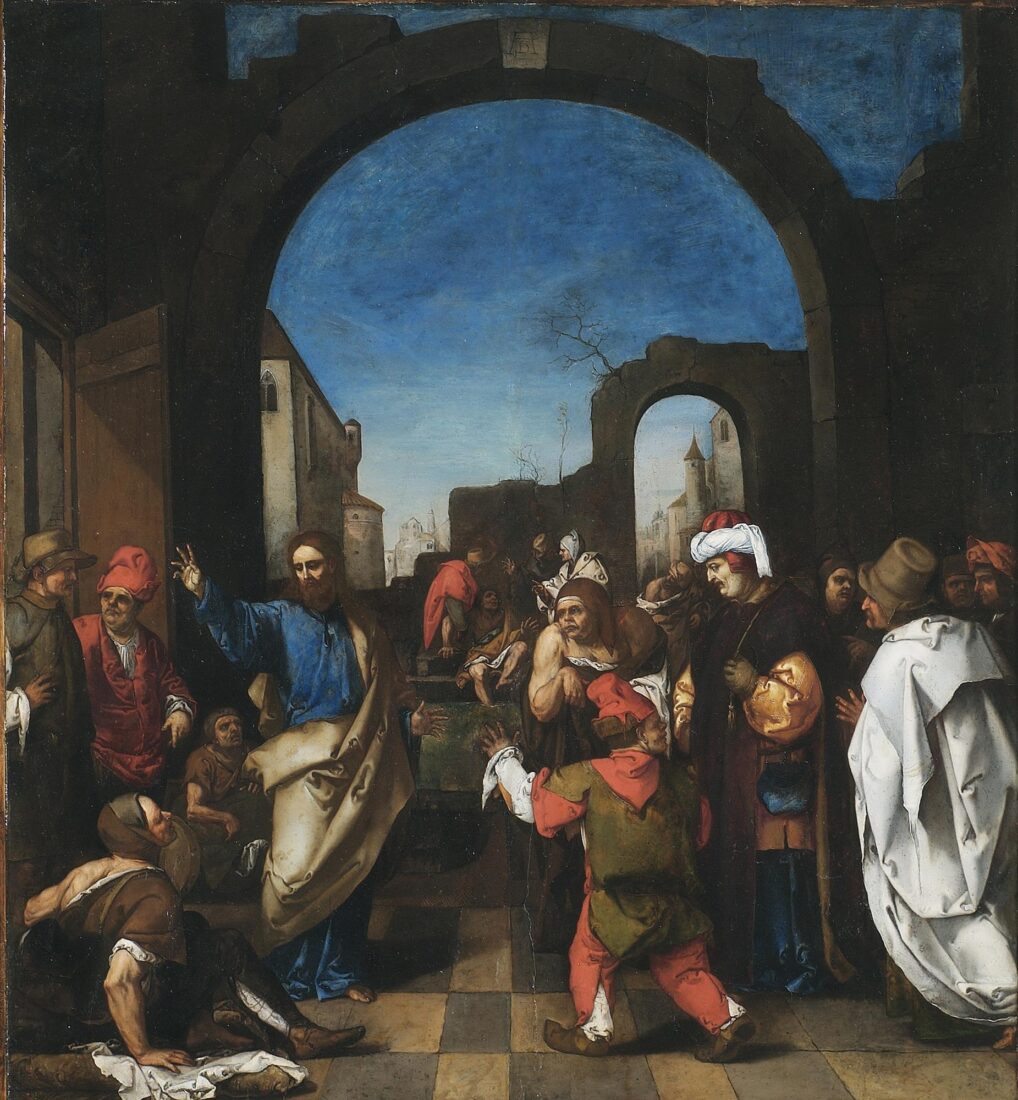
In Bernardo de’ Dominici’s impressive and laudatory biography of Luca Giordano (which is included in Gian Pietro Bellori’s “Le vite de’ pittori, scultori et architetti moderni” and is considered a major historical source for Neapolitan Baroque painting), the author emphasizes the painter’s “enormous virtuosity” for copying the techniques of the great artists of the past. He writes that the Abbot of the Certosa Monastery of San Martino in Naples “insisted that Luca was capable of imitating every technique except for that of Albrecht Durer, whom he admired passionately and whose work he had purchased for the sum of 600 ducats. This painting depicted in great detail the story of the Adoration of the Magi. The experts had assured the Abbot that this was an authentic Durer. The Abbot, who boasted of the purchase in front of Luca, heard the latter say that he had painted this picture himself and to verify his claims showed him the place on the back of the panel where he had discreetly signed it. Feeling that he’d been defrauded, the Abbot sought justice, demanding reimbursement for the sum he’d paid for the work believing that it was a Durer, not a Giordano. The case reached the courts of the Royal Council, but Luca was acquitted because the judges recognized that his worth was as great as Durer’s. However, to placate the Abbot, Prince Sonnino purchased the work, which he liked at any rate, for the sum of 1600 ducats. To this day, the painting is shown to art lovers as a Durer, with the truth subsequently revealed truth as incontrovertible proof of Luca Giordano’s enormous talent. (“Vita del cavaliere D. Luca Giordano pittore napoletano”, Naples, 1729, p. 92).
Despite the debate over the painting’s subject and the location of the signature, art historian Wilhelm R. Valentiner, as well as most subsequent Giordano scholars, believes that this incident is related to the painting in the Bohler and Steinmeyer Collection in New York, which depicts the “Healing of the Paralytic”. As Valentiner describes it, the top part of the gate that frames the scene bears Durer’s familiar monogram, whereas the shadow on the left, written sideways so as to be concealed by the frame, contains Giordano’s signature (“An Early Forger,” Art in America, I, 1913, pp. 195-208). This painting then passed into the possession of an unknown owner to reappear at auction in Munich in 1933. Since then its whereabouts are unknown.
In 1967, the National Gallery purchased a painting by an unknown painter, entitled “The Pool of Siloam”. In 1968-69, Robert Lebel, who had been asked to appraise the Western European painting collection, attributed it to Francesco Villamena (1564-1624). But on a visit to the National Gallery in 1988, Professor Federico Zeri attributed it to an early work of Luca Giordano. Angela Tamvaki, the then curator of the National Gallery’s Western European painting collection, did additional research and began to suspect that it was the painting that Wilhelm R. Valentine referred to and published in 1913. This opinion was supported by Giuseppe de Vito, a Luca Giordano scholar and specialist of his early works, who instigated a laboratory investigation into the existence of a signature and date.
The scholars’ suspicions were confirmed and proven correct when, in 1997, an examination of the painting using infrared reflectography revealed the signature and date written on along the side concealed by the frame on the lower left margin of the painting. No trace, however, was found of the Durer initials added by Giordano. In July 2008, a cleaning by the National Gallery conservators uncovered the monogram on the upper portion, in the center of the arch, a fact that identifies this painting as the one mentioned by Valentiner.
The painting depicts the scene described in the Gospel according to John, of the healing of the paralytic at the pool at Bethzatha. According to John, from time to time an angel would agitate the waters of the pool at Bethzatha and the first person able to enter it would be cured of every affliction. The ill and lame would gather around the pool ready to jump in. But the paralytics were unable to pass ahead of the others and thus remained waiting their entire lives. Jesus performed the miracle of healing a paralytic in order for him to then enter the pool and complete his cure.
Christ on the left side of the painting with a gesture of blessing heals the paralyzed man who looks him in the eye as he struggles to stand up. The crowd around them, made up of the ill, relatives and passersby, observe the scene with curiosity. In the background, two men are supporting a patient emerging from the miraculous water. The void in the center foreground of the composition leads the viewer’s eye to the pool, the symbol of baptism through which Salvation is completed. The dominant reddish-brown palette creates a sense of hopelessness, whereas the blue of Christ’s mantle and the sky symbolize hope.
The 1997 examination of the painting with infrared reflectography revealed yet another surprise. There had been angel on the pool in the center background of the painting, who was agitating the water with his wand. It is not known why Giordano painted over the angel – perhaps to give more emphasis to Christ’s miracle – its form however remains on the work like an invisible presence.
